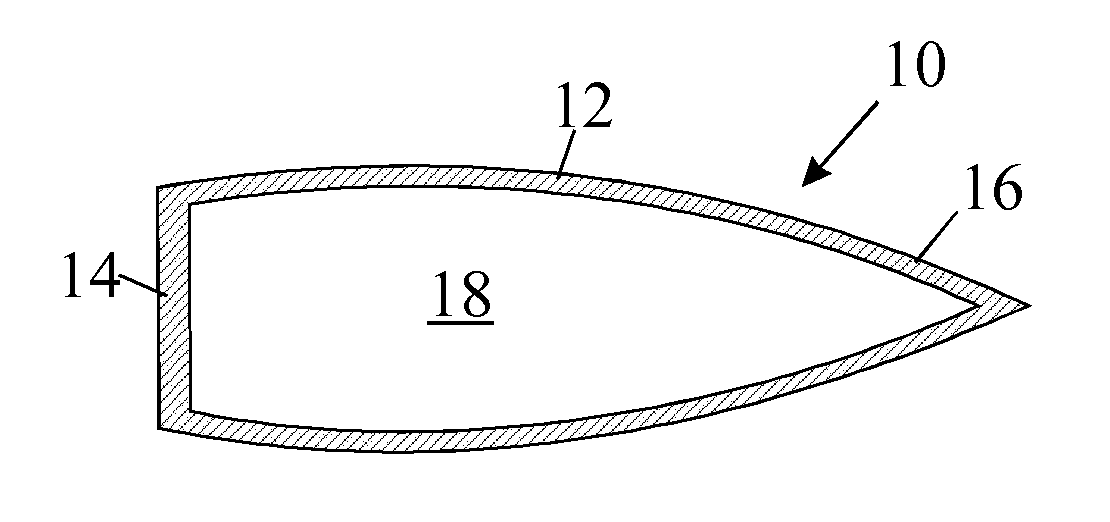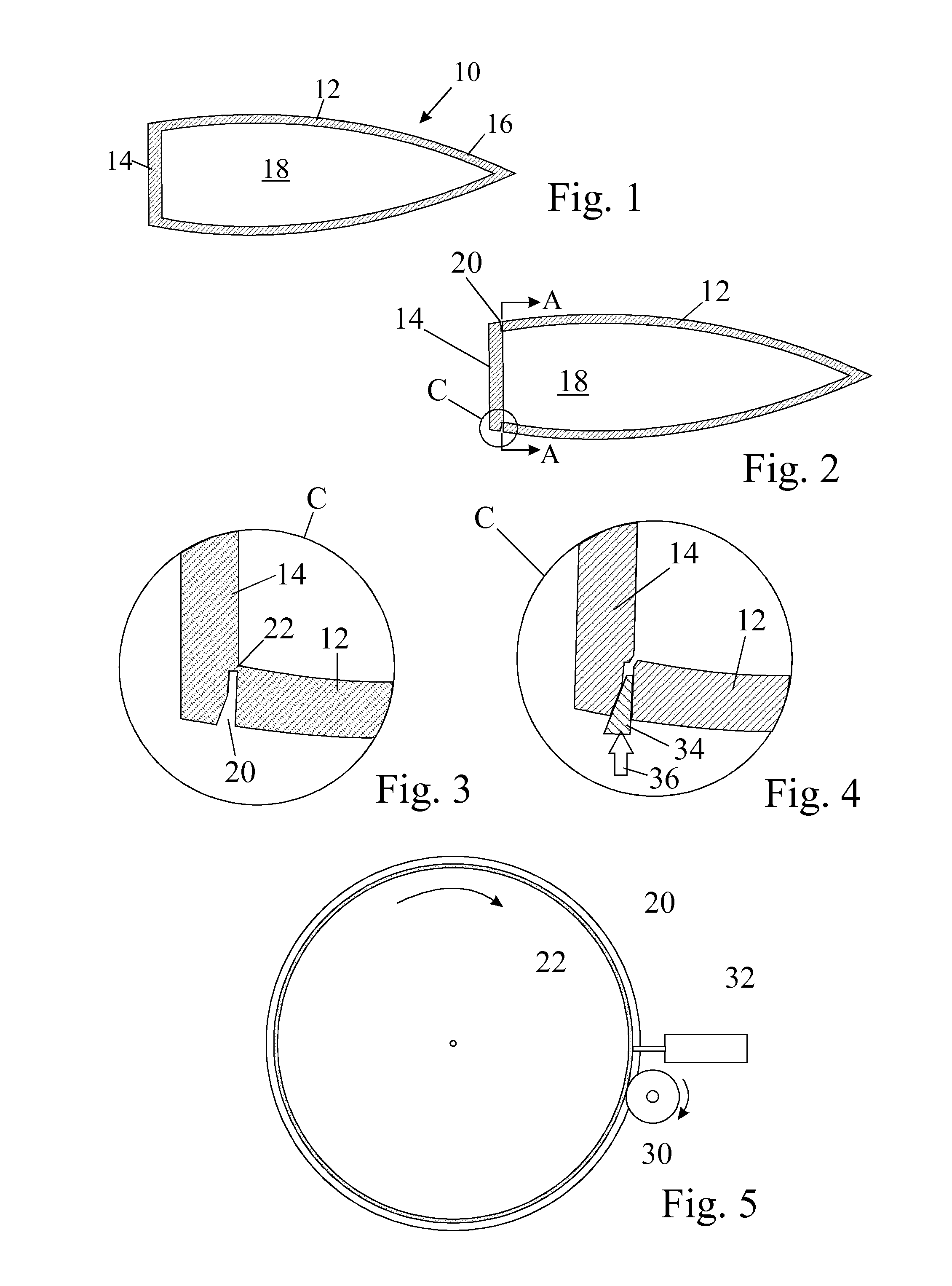Disposal of Munitions
a technology for disposing munitions and ammunition, which is applied in the direction of ammunition, weapons, weapons, etc., can solve the problems of greater wall thickness on one side than on the other, and cannot be sure that the inner and outer walls of the shell are perfectly cylinders
- Summary
- Abstract
- Description
- Claims
- Application Information
AI Technical Summary
Benefits of technology
Problems solved by technology
Method used
Image
Examples
Embodiment Construction
)
[0027]A typical munition shell 10, as shown in section in FIG. 1, has a generally cylindrical outer wall 12, a tapering nose 16 and a flat base 14. The shell is hollow and has an inner chamber 18 filled with an explosive material. The cylindrical wall 12 has a wider girth near its centre than at its base.
[0028]The conventional manner of disposing of such a munition is to start by cutting open the shell and this is done by sawing through the wall of the shell at its point of maximum girth. This produces two shell parts both containing explosive. The two parts are emptied of explosive and the metal parts of the shell can then be recycled. The explosive can be destroyed by burning it, an operation that can be performed safely if the explosive is first suitably shredded.
[0029]As earlier described, regardless of the method used to cut through the shell wall, this results in the creation of pink water, which itself presents a disposal problem.
[0030]In the illustrated embodiment of the in...
PUM
 Login to View More
Login to View More Abstract
Description
Claims
Application Information
 Login to View More
Login to View More - R&D
- Intellectual Property
- Life Sciences
- Materials
- Tech Scout
- Unparalleled Data Quality
- Higher Quality Content
- 60% Fewer Hallucinations
Browse by: Latest US Patents, China's latest patents, Technical Efficacy Thesaurus, Application Domain, Technology Topic, Popular Technical Reports.
© 2025 PatSnap. All rights reserved.Legal|Privacy policy|Modern Slavery Act Transparency Statement|Sitemap|About US| Contact US: help@patsnap.com


